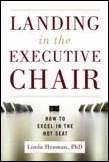Posts
How to Turn Disagreements into Great Decisions for Your Small Business
/in Management & Leadership, Practices for Professionals/by Tom SalonekI find if flattering when someone on my team disagrees with me. It says they care more about the firm than themselves or offending me. The first thing we cover at our two-day strategic planning session is our ‘Rules of Engagement’. It’s posted on an oversized sheet and taped to the wall. It says:
Hi there! This article is available for free. Login or register as a StrategyDriven Personal Business Advisor Self-Guided Client by:
Subscribing to the Self Guided Program - It's Free!
About the Author

Pure Accountability
/in Management & Leadership, Practices for Professionals/by Jeff KortesOne of the reasons I have always loved high school wrestling as a sport is that a competitor lives and dies on his or her own merits… yes… females are becoming more prevalent in High School wrestling. One of the aspects of the sport that has always attracted me is that when you lose there is no one else to blame.
You can’t hide behind ‘the team’. You are out there on your own. This creates a certain sense of urgency and determination to win. It’s embarrassing to be beaten in front of hundreds of spectators… much less be pinned!
Hi there! This article is available for free. Login or register as a StrategyDriven Personal Business Advisor Self-Guided Client by:
Subscribing to the Self Guided Program - It's Free!
About the Author

Jeff is also a member of the National Speakers Association and a regular speaker on the topics of retention, recruiting and leadership. For more information, visit www.SlugProofYourTeam.com.
Five Ways to Land in the Executive Chair
/in Management & Leadership, Practices for Professionals/by Linda HenmanExecutives play in a bigger league; they play for higher stakes; and the game is for keeps. Doing the day-to-day, hands-on work doesn’t fit the job description of the executive; driving the strategy, developing the bench, and making high-caliber decisions have become the new coinage of the realm. When you understand who executives are, what they do, and how they do it, you stand a better chance of joining their ranks.
|
Here are five suggestions for enlisting in this august body of leaders:
- Practice F2 Leader Leadership – What explains the differences between the leader who rises steadily through the ranks versus the one whose career mysteriously jumps the track short of an executive position? If people find the fast track in the first place, they probably know how to get the job done, have displayed integrity, and offer enough intellectual acumen to succeed. When a leader offers all these and still fails, flawed leadership style may be the culprit. F2 Leaders – firm but fair leaders whom others trust – commit themselves to both relationship behavior and task accomplishment.
- Move beyond Problem Solving to Innovative Decision Making – As you climbed the stairs to your current position, others called on you to solve problems. The status quo changed; you figured out the cause for the change; and you returned things to the way they were. But this process only restores the status quo. It doesn’t take the company into the future. Decision making, on the other hand, requires innovative thinking and separates those who land in the executive chair from those who don’t.
- Tie Strategy and Execution Together – A breakthrough product, dazzling service, or cutting-edge technology can put you in the game, but only rock-solid execution of a well-developed strategy can keep you there. Effective execution pushes you to decipher your broad-brush theoretical understanding of the strategy into intimate familiarity with how it will work, who will take charge of it, how long it will take, how much it will cost, and how it will affect the organization overall.
- Plan Succession – The previously perceived quiet crisis of succession is now sounding its siren, and smart companies are responding by creating disciplined approaches to managing their futures. These companies realize replacement planning isn’t enough. These leaders understand you need a systematic approach to talent development.
When people characterize those who land in the executive chair, they often offer ‘vision’ as their most important attribute. Without question, effective leadership requires a strategic focus. But remember. People in mental institutions have visions, too. Seeing into the future is not enough. Those who land in the executive chair and excel there understand they must outrun their competitors, all the while inspiring loyalty among those who follow them.
About the Author

Linda holds a Ph.D. in organizational systems, two Master of Arts degrees in interpersonal communication and organizational development, and a Bachelor of Science degree in communication. By combining her experience as an organizational consultant with her education in business, she offers her clients selection, coaching, and consulting solutions that are pragmatic in their approach and sound in their foundation.
Corporate Cultures – Individual Initiated, Rules and Standards Controlled Environment
/in Corporate Cultures, Premium/by StrategyDrivenThe Individual Initiated, Knowledge and Skills Controlled Environment represents a culture that is moving toward greater consistency in action if not action initiation. These organizations are still largely guided by local controls and individual contributors and lack the more rigorous oversight and activity reinforcement realized in supervisory and leader led companies. Thus, these organizations gain a limited amount of increased consistency while still maintaining a high level of innovation and flexibility.
Hi there! Gain access to this article with a StrategyDriven Insights Library – Total Access subscription or buy access to the article itself.
| Subscribe to the StrategyDriven Insights Library
Sign-up now for your StrategyDriven Insights Library – Total Access subscription for as low as $15 / month (paid annually). Not sure? Click here to learn more. |
Buy the Article
Don’t need a subscription? Buy access to Corporate Cultures – Individual Initiated, Rules and Standards Controlled Environment for just $2! |

 In this fast-paced marketplace and certainly during these challenging economic conditions, StrategyDriven Professionals typically find themselves working more than forty hours a work. More common among these professionals is a forty-five hour work week with others working fifty hours a week.
In this fast-paced marketplace and certainly during these challenging economic conditions, StrategyDriven Professionals typically find themselves working more than forty hours a work. More common among these professionals is a forty-five hour work week with others working fifty hours a week.